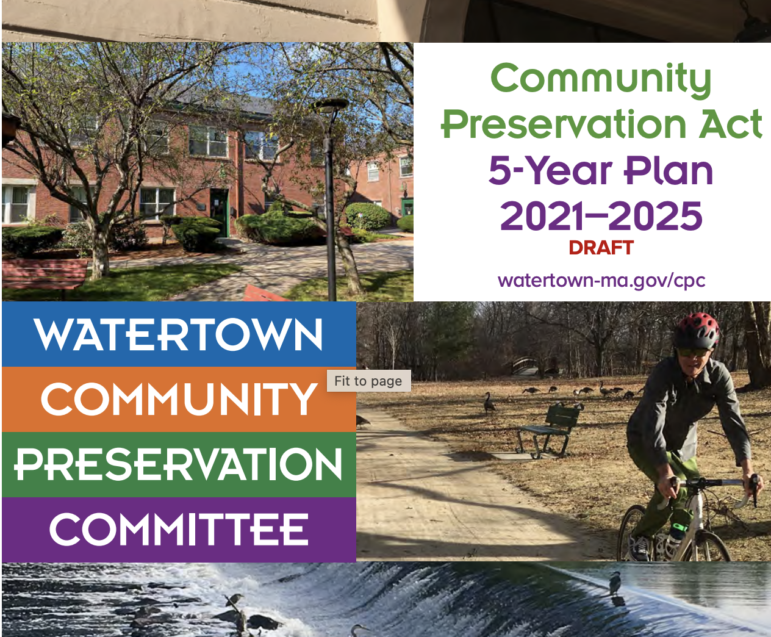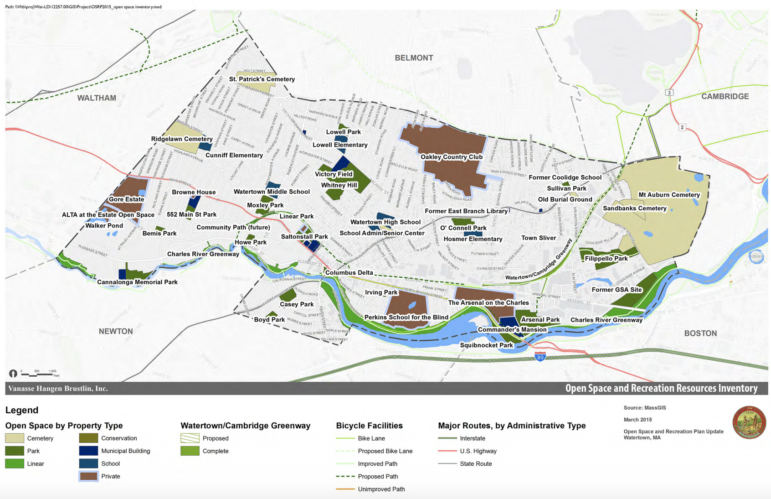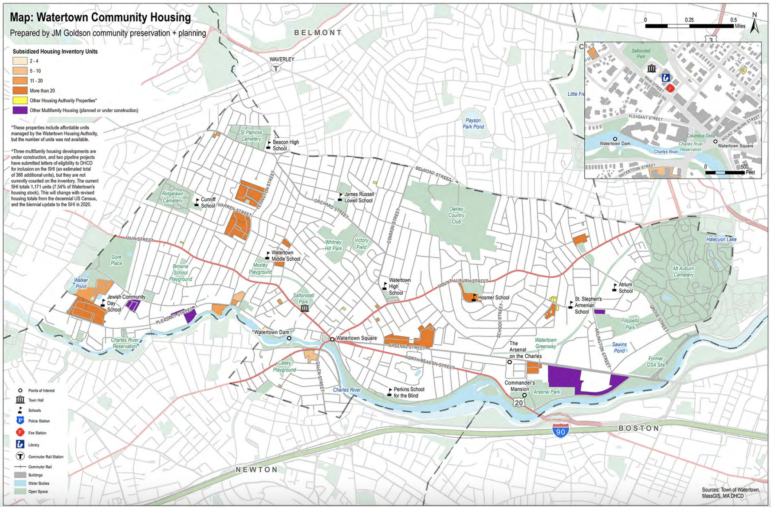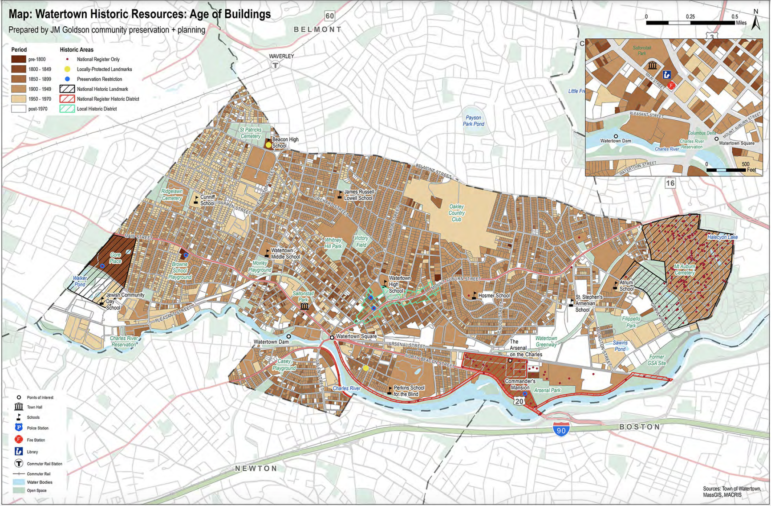
Watertown has several million dollars to spend on projects to acquire land for open space and outdoor recreation, create affordable housing and preserve the Town’s historic structures and resources. The Committee that will make recommendations on how to spend the money recently released a draft of the plan that will guide which projects will get funded.
Last week, the Community Preservation Committee made the draft of a five-year plan available for the public to read (see it here). The Committee wants to know what Watertown residents think about the plan, and will host a meeting on May 20 at 7 p.m. to gather input. Click here for details for attending and participating in the virtual meeting.
The 53-page plan includes information about what projects qualify for Community Preservation funds, information about how to apply, background on the Community Preservation Act, as well as details of Watertown’s current stock of open space/recreation land, affordable housing and historic buildings, said Watertown Community Preservation Coordinator Lanae Handy.
“We are really excited. I really hope the plan is educational and lets people know about the needs and resources in the Town,” Handy said.
Watertown has about $9 million in funds generated by both a 2 percent property tax surcharge and matching funds from the State, Handy said. Each year the fund grows by about $2 million.
Sections of the Plan
In the open space section, there is an accounting of the Town-owned properties (parks, playgrounds and other parcels), those owned by the state (mostly along the Charles River), and privately owned land that has open space on it. The plan includes potential opportunities to acquire them, such as Walker Pond on the west side of Town and Sawins Brook and Pond in the East End.

Similarly, the historic preservation section has information about historic buildings, documents, and other resources in Town. Many homes are privately owned, while historic documents are kept in the Watertown Free Public Library, Perkins School for the Blind and the Armenian Museum of America. There are also monuments, historic cemeteries and more. A map in the plan shows the age of different homes and buildings around Watertown.
Some potential projects include rehabilitating historic homes, preserving historic documents and monuments and giving more public access to historic amenities.
Affordable housing has plenty of details in the plan, including how many affordable units currently exist, how people can qualify to apply to live in those units, and highlights of the Town’s Community Housing Goals. The goals include creating opportunities for both low- and moderate-income community housing.
Potential uses of funds in the affordable housing area include redevelopment of vacated sites into affordable housing, rehabilitating existing buildings into low- and moderate-income housing, and creating incentives for developers to provide more affordable units than required.

Application Process
Once the plan is adopted, the first round of applications and grants will begin. An informational meeting for those interested in making a proposal will be held at the end of the summer, Handy said, and then applicants will have to submit preliminary proposals in the fall to the Community Preservation Committee to see if they are eligible for funding. The full applications must be submitted by a yet-to-be determined deadline at the end of year.
“We are hoping that we will review the projects that we receive in December, and depending on how many we receive and the funds available, whittle them down, if necessary,” Handy said. “Then with the ones we deem as the best possibilities, we will have them do presentations, sometime between January and March. And after that the Committee will deliberate and vote on which project to fund, and send the recommendations to the Town Council by April or May.”
The Town Council has the final say on which projects using Community Preservation funds get approved.

Dos and Don’ts
How Community Preservation dollars can be spent is spelled out in the state’s Community Preservation Act. The plan includes detailed descriptions of what types of projects on which the funds can be used and what they cannot allowed to be spent on. Handy provided some basics.
“The most important thing to keep in mind is that community housing is the only category where you can use funds to support programs. So, they can support rental assistance or first-time homebuyers down payment programs,” Handy said. “You cannot use funds to rehab or restore open space, or community housing, unless the CPA funds were used to acquire or create the resources.”
While the Community Preservation Committee’s plan includes some potential projects, the Committee does not apply for, organize or manage the projects.
“We do not come up with the project ideas,” Handy said. “What is in the document are projects that came up in the Comprehensive Plan or projects from people who have come to our public forum, webinar, participated in our community survey.”
More information about the Community Preservation Committee can be found here: https://www.watertown-ma.gov/952/Community-Preservation-Committee
Where is the open space to be located? In Waltham maybe?
Very nice.
And yet still there’s those potholes, cracks, and gulleys in the streets.
While the CPA money can’t be spent on things like road projects, it may free up money in the Town budget for things like that.
Thanks for clarifying this, Charlie. The statute that defines the allowed uses of CPA funds is very clear and not open to debate, but you make a good point that it could allow funds from the town budget to be allocated for other purposes.
My congratulations and thanks to the CPC for this readable and inspiring plan! It comes in the nick of time, as financial pressure on every inch of open space and every house or apartment in Watertown is accelerating. I am excited to see the proposals that you receive.
(P.S. I was glad to see that artificial turf does not qualify for CPA funds.)